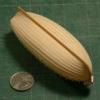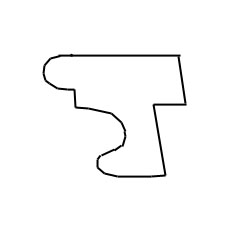-
Posts
13,274 -
Joined
-
Last visited
Content Type
Profiles
Forums
Gallery
Events
Everything posted by druxey
-

3D Printing - Not Just Yet!
druxey replied to dvm27's topic in CAD and 3D Modelling/Drafting Plans with Software
In the accompanying video I'm shocked to see that the demonstrator has an open jar of acetone, sending vapors into the room and his lungs! Folks, if you do this, a spark-free fan and venting is a Very Good Thing to do. -

Household Ammonia
druxey replied to Q A's Revenge's topic in Building, Framing, Planking and plating a ships hull and deck
If the piece is too thick to bend with heat /steam, then consider a laminated construction. -

HMS Sussex by mij - Scale 1:48
druxey replied to mij's topic in - Build logs for subjects built 1501 - 1750
You are a braver man than I, mij, to use power tools to fair! Personally I wouldn't risk messing up many hours of work by grinding a bit too much off. You must have nerves of steel. The model looks great so far. -
Pin racks gained popularity as the bulwarks became closed in. While there were open rails, it was easy to belay lines to them. Once this option was no longer available - presto! Pin racks proliferated.
-

HMS Tremendous 1784
druxey replied to Alexandr's topic in Building, Framing, Planking and plating a ships hull and deck
The figure is of a classical Graeco-Roman hero-warrior, as seen through 18th century eyes. You would have seen singers dressed like this in Handel operas. -
If the outside is painted or sealed, so should the inner side of the hull. That said, I once used acrylic paint instead of my usual solvent-based oil paint. I had some left-overs and thought this a great way to use up the can. Big mistake! The moisture content warped the planks and sprang several. It was hell's teeth to restore several weeks' worth of work. I had to actually replace a couple of planks as well. Lesson learned: economy is not always the best policy.
-
Sorry to read of the derailment being so close to you; but at least you did not have to be evacuated. The new block looks great.
- 2,207 replies
-
One down, and many to go.... That first frame looks very nice indeed, Ed.
- 3,618 replies
-
- young america
- clipper
-
(and 1 more)
Tagged with:
-

ebonizing boxwood
druxey replied to Kurt Johnson's topic in Painting, finishing and weathering products and techniques
I would definitely cut in a demarkation line as insurance against bleeding. Masking tape alone will not prevent dye 'creep'. To do an experimental run off-model is a very good move! -
Spyglass: I think you may be mislead by the fact that some builders paint the black (first) strake above the wale, so that the upper cheek appears to land on the wale: it actually sits on the black strake.
-
I believe from my study of the subject that this is correct for 18th century British construction. The width of the margin on the wing transom varies depending on the size of ship, of course. It is as much as 6" for 110 gun ships and down to 3" on small ships. For frigates it could be, as Allan shows, 4 1/2" or 5".
-

ebonizing boxwood
druxey replied to Kurt Johnson's topic in Painting, finishing and weathering products and techniques
I do all the shaping and bending before using shoe dye. -

Dorade Omega1234 - FINISHED - yawl
druxey replied to Omega1234's topic in - Build logs for subjects built 1901 - Present Day
Yup, that is small all right. Nice detail for the size, Omega. What is the scale, please?
About us
Modelshipworld - Advancing Ship Modeling through Research
SSL Secured
Your security is important for us so this Website is SSL-Secured
NRG Mailing Address
Nautical Research Guild
237 South Lincoln Street
Westmont IL, 60559-1917
Model Ship World ® and the MSW logo are Registered Trademarks, and belong to the Nautical Research Guild (United States Patent and Trademark Office: No. 6,929,264 & No. 6,929,274, registered Dec. 20, 2022)
Helpful Links
About the NRG
If you enjoy building ship models that are historically accurate as well as beautiful, then The Nautical Research Guild (NRG) is just right for you.
The Guild is a non-profit educational organization whose mission is to “Advance Ship Modeling Through Research”. We provide support to our members in their efforts to raise the quality of their model ships.
The Nautical Research Guild has published our world-renowned quarterly magazine, The Nautical Research Journal, since 1955. The pages of the Journal are full of articles by accomplished ship modelers who show you how they create those exquisite details on their models, and by maritime historians who show you the correct details to build. The Journal is available in both print and digital editions. Go to the NRG web site (www.thenrg.org) to download a complimentary digital copy of the Journal. The NRG also publishes plan sets, books and compilations of back issues of the Journal and the former Ships in Scale and Model Ship Builder magazines.




